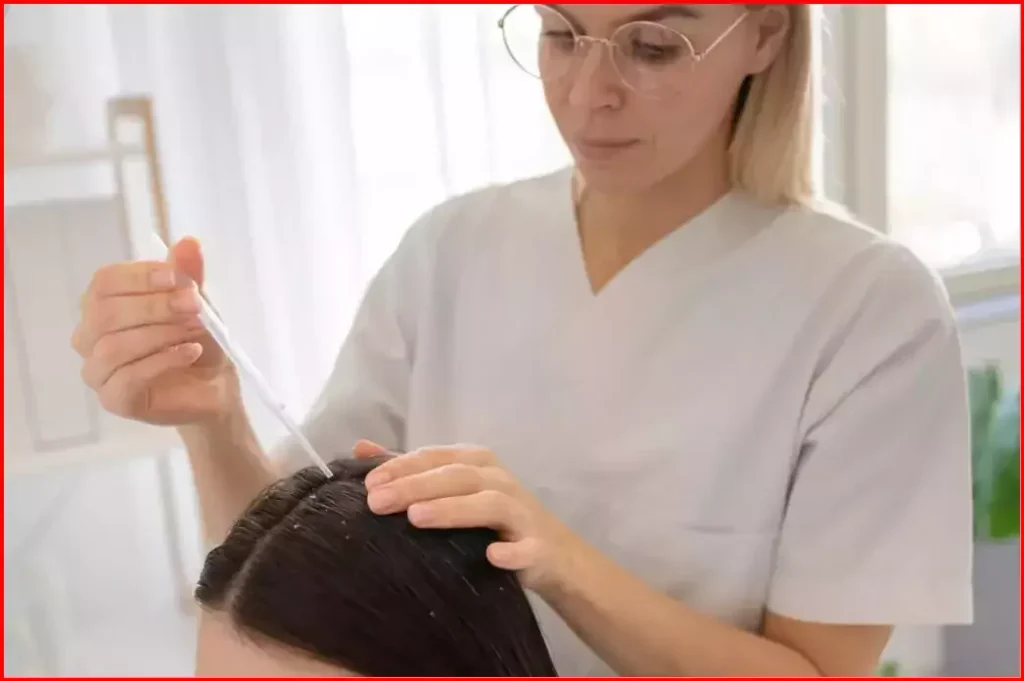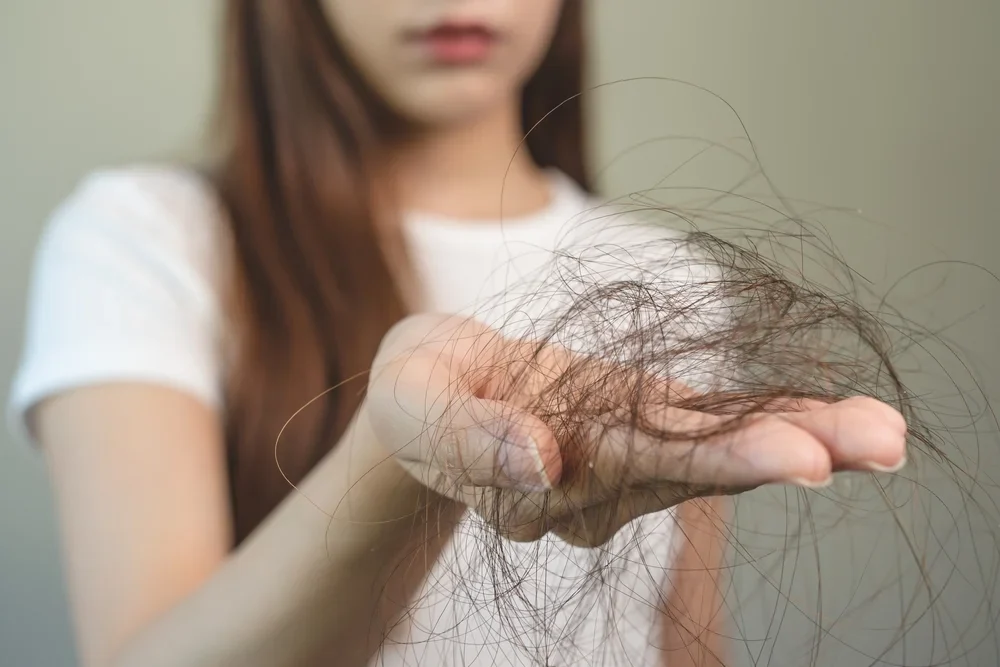If you’ve experienced thinning hair or early baldness (you’re not alone, 50% of adults worldwide face androgenetic alopecia by midlife), you know how frustrating it can be. Existing treatments like minoxidil and finasteride help slow hair loss, but they often fall short of reviving dormant follicles.
Enter PP405, a topical molecule from UCLA and Pelage Pharmaceuticals that shifts follicle metabolism to wake up “sleeping” stem cells. Early data is promising, but what makes this drug stand out? Let’s break it down, no jargon, just real-world science and results.
What Is PP405 and How Does It Work?
PP405 is a mitochondrial pyruvate carrier (MPC) inhibitor. Simply put, it changes how hair follicle stem cells generate energy, moving them from a resting state back into growth mode.
- Mechanism: Blocks pyruvate from entering mitochondria → triggers glycolysis, a fast energy pathway.
- Activated cells show increased Ki67 (cell proliferation marker) and LDH activity (glycolysis indicator) within 24 hours post-application.
- Phase 1 (July–January 2024)
- Phase 2a (June 2024–Feb 2025)
Formulation: 0.05% topical gel
Duration: Daily application at bedtime for 7 days
Findings:
- Safe and well tolerated; no detectable drug levels in blood.
- Statistically significant activation of hair follicle stem cells (Ki67 and LDH).
- Launched with results featured at AAD 2024 (March 9).
Participants: 60–78 adults (18–55 years old) with mild–moderate pattern hair loss.
Dosage: 0.05% gel once daily for 16 weeks.
Locations: Indiana, Minnesota, Texas (2), Utah, California, Virginia.
Goals:
- Measure safety, systemic absorption (none expected), and biomarker response (Ki67, LDH).
- Assess clinical effectiveness: hair count, density, and visible regrowth. Preclinical data suggest 20–30% improvement in hair count over 3–4 months.
Phase 2b is planned for early 2026 (100–300 participants, 6+ months follow-up), with Phase 3 projected post-2027.
💰 Behind the Science: Pelage’s Momentum
Pelage Pharmaceuticals, founded by UCLA researchers (Lowry, Christofk, Jung) and led by CEO Daniel Gil, PhD, and CMO Dr. Qing Yu Christina Weng, is backed by serious investors.
- Series A (Feb 2024): $16.75 million led by Google Ventures, with Main Street Advisors, Visionary Ventures, YK BioVentures.
- Series A–1 (Aug 2024): $14 million, again with GV at the forefront.
- Total Raised: $30.75 million, funding robust clinical progression.
- Funders express strong belief in the science, team, and market potential.
🧩 How PP405 Compares to Other Options
Treatment | Mechanism | Format | Safety |
Minoxidil | Vasodilation | Topical | Low–moderate |
Finasteride | DHT inhibition | Oral | Moderate–high |
PP405 | Stem cell metabolic activation | Topical | Very low systemic exposure |
👥 Clinical Insight and Community Buzz
Doctors and researchers are excited about what Pelage Pharmaceuticals is doing with their new hair loss treatment, PP405. It’s not just about growing hair, it’s about doing it safely, naturally, and for everyone.
👩⚕️ What Doctors Are Saying:
- Dr. Mathew Avram (Harvard Medical School):
“This is an exciting opportunity to reverse hair loss, not just slow it down. We’re also making sure the study includes diverse people, which is very important.” - Dr. Qing Yu Christina Weng (Chief Medical Officer, Pelage):
“We’ve reached an important step in bringing this treatment to people of all genders, hair types, and skin tones.” - Dr. William Lowry (Pelage Co-founder, UCLA):
“We found a small molecule that can wake up hair stem cells and help restart hair growth.” - Dr. Cathy Friedman (Board Member, GV):
“We believe PP405 could be a better option than treatments that only slow down hair loss.”
🔍 Why Experts and the Community Are Paying Attention:
- The science is based on UCLA research into stem cells and hair follicles.
- It’s one of the first treatments that may help actually regrow hair, not just stop it from falling.
- The gel is easy to use, non-invasive, and does not affect the bloodstream.
- People are hopeful because the trial includes all hair types and skin tones, which hasn’t always happened in past studies.
💬 The Buzz:
- Many in the hair loss community are hopeful about a treatment that doesn’t involve pills, surgery, or side effects.
- Experts see PP405 as a game-changer because it goes to the root of the problem. Literally, by waking up sleeping hair follicles.
- The backing by Google Ventures (GV) and top doctors adds even more trust.
🔮 What’s Ahead—Timeline & Prospects
- Phase 2a Completion: Feb 2025
- Phase 2b Start: Early 2026
- Earliest Market Launch: Optimistically 2027–2030, depending on Phase 2b/3 outcomes and FDA review
- Potential Hair Count Gains: 20–30% at peak, based on biomarkers and early clinical insights
📝 Snapshot: PP405 Fast Facts
- Mechanism: 0.05% topical MPC inhibitor → metabolism shift → Ki67 + LDH increase
- Phase 1: Safe; no systemic presence; stem cell activation in 7 days
- Phase 2a: 60–78 participants, 16-week protocol, data due early 2025
- Funding: $30.75M led by Google Ventures
- Investors: GV, Main Street, Visionary Ventures, YK BioVentures
- Goal: Achieve 20–30% hair count increase; prepare for pivotal trials
✨ Why This Matters Now
PP405 doesn’t just treat loss, it reboots follicles by targeting cellular metabolism. With strong backing and solid early-phase results, it’s a credible contender in hair regeneration. Innovations like this could reshape the future of pattern baldness treatments for millions.
FAQs
No, PP405 is not yet available to the public in the USA. It is currently in Phase 2a clinical trials, and patient enrollment is ongoing across multiple US states.
PP405 is a novel topical small molecule that targets dormant hair follicle stem cells by inhibiting the mitochondrial pyruvate carrier (MPC), shifting cellular metabolism to promote hair regeneration. It is designed to treat androgenetic alopecia by reactivating hair follicle stem cells and stimulating new hair growth.
If clinical trials continue to show positive results, PP405 might reach the market between 2027 and 2030, depending on regulatory approvals and trial outcomes.
PRP (platelet-rich plasma) treatments can stimulate hair growth and improve hair density, but results vary widely among individuals, and it is not considered a permanent cure for hair loss. Its effectiveness depends on patient response and it often requires repeated treatments.











